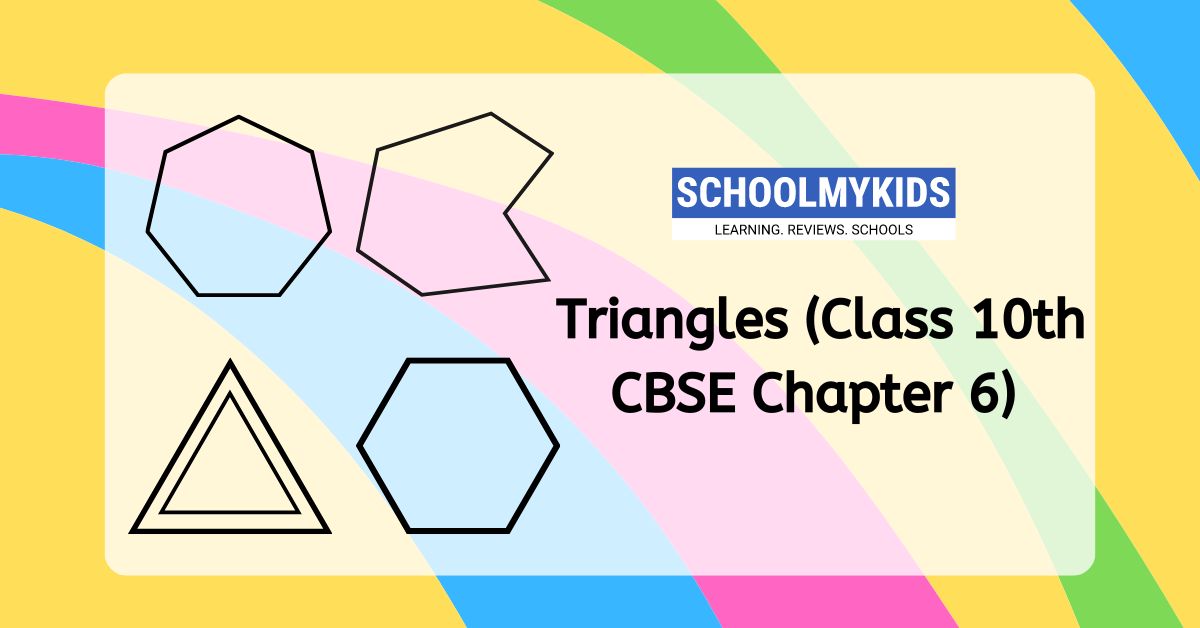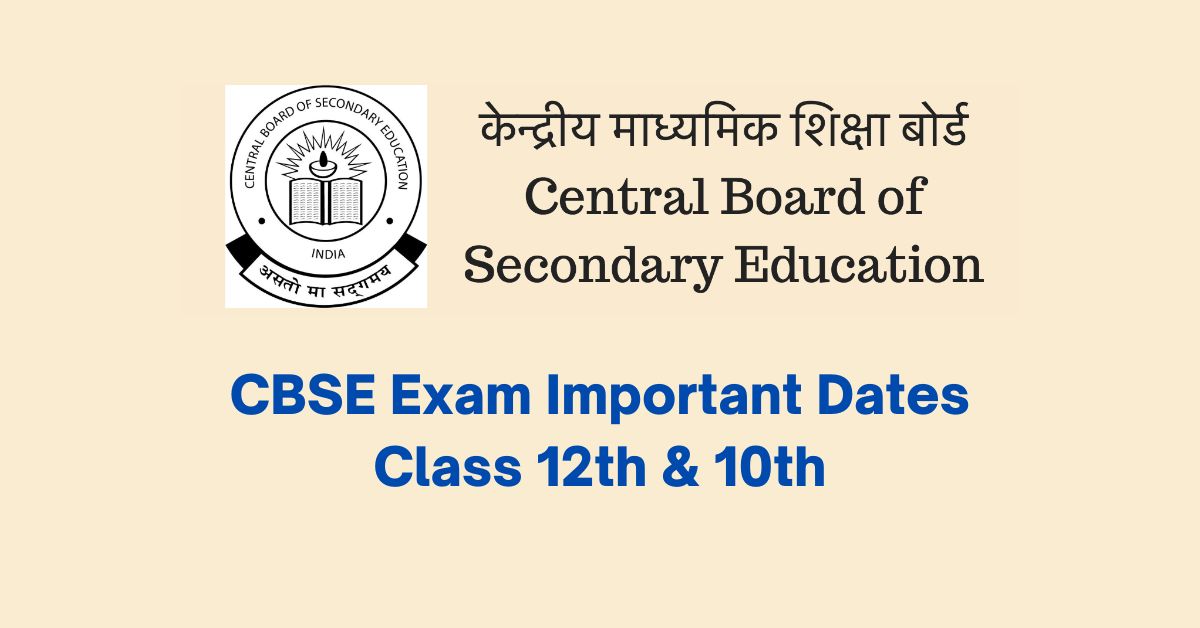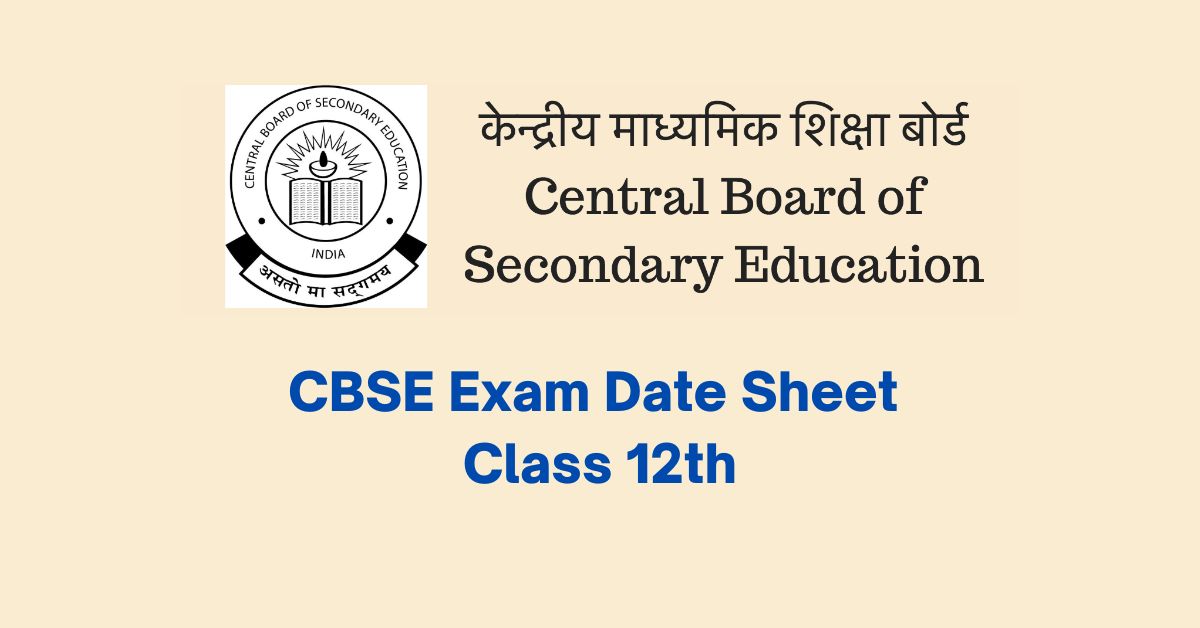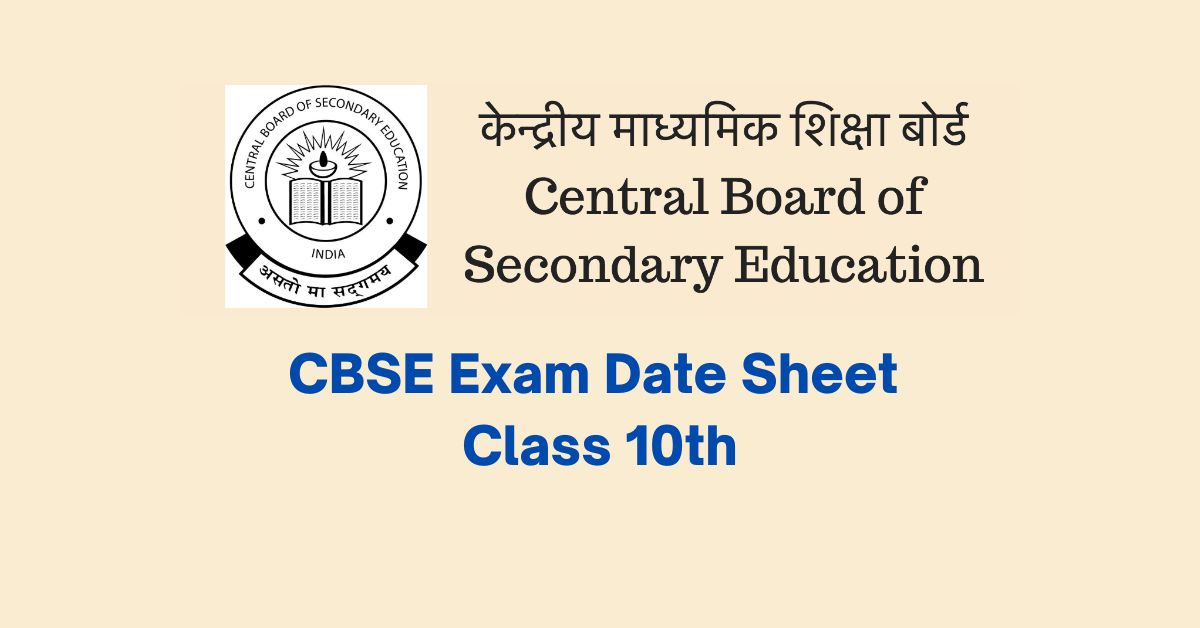Triangles, the fundamental building blocks of geometry, are explored in detail in Chapter 6 of your CBSE Class 10 Maths textbook. This chapter equips you with the knowledge and formulas to understand their properties, solve for missing sides or angles, and classify them based on their characteristics. Let’s delve into the world of triangles!
Essential Properties of Triangles:
- Sum of Angles: The three internal angles of any triangle always add up to 180 degrees. This property forms the foundation for solving many triangle problems.
- Number of Sides: A triangle has exactly three sides and three internal angles.
Classifying Triangles
Triangles can be classified based on their side lengths and angles. Here are the main categories:
- Based on Sides:
- Equilateral Triangle: All three sides are equal, and all angles measure 60 degrees.
- Isosceles Triangle: Two sides are equal, and the angles opposite the equal sides are also equal.
- Scalene Triangle: All three sides and angles are unequal.
- Based on Angles:
- Acute Triangle: All three angles are less than 90 degrees.
- Right Triangle: One angle is exactly 90 degrees (the right angle).
- Obtuse Triangle: One angle is greater than 90 degrees.
Formulas for Triangles
Understanding these formulas is key to solving triangle problems:
- Perimeter: The perimeter is the total length of all three sides added together.
- Formula: Perimeter = Side₁ + Side₂ + Side₃
- Area: The area of a triangle is the measure of the surface enclosed by its sides. There are two common formulas, depending on the availability of information:
- Formula 1 (using base and height): Area = 1/2 * Base * Height
- Base: Any side of the triangle.
- Height: The perpendicular distance from the opposite vertex to the base.
- Formula 2 (using Heron’s Formula – for any triangle):
- Area = √[s(s – Side₁)s(s – Side₂)s(s – Side₃)]
- s: Semi-perimeter (half of the triangle’s perimeter).
- Formula 1 (using base and height): Area = 1/2 * Base * Height
Examples to Illustrate the Formulas:
Let’s see how these formulas work in practice:
Example 1 (Perimeter):
Find the perimeter of an isosceles triangle with two sides of 8 cm each and a third side of 6 cm.
Perimeter = 8 cm + 8 cm + 6 cm = 22 cm
Example 2 (Area – Formula 1):
Calculate the area of a right triangle with a base of 10 cm and a height of 6 cm.
Area = 1/2 * 10 cm * 6 cm = 30 cm²
Example 3 (Area – Formula 2):
Determine the area of a triangle with sides of 5 cm, 7 cm, and 8 cm (use Heron’s Formula).
Steps:
- Calculate the semi-perimeter (s) = (5 cm + 7 cm + 8 cm) / 2 = 10 cm
- Apply Heron’s Formula: Area = √[10 cm (10 cm – 5 cm) (10 cm – 7 cm) (10 cm – 8 cm)] ≈ 6.43 cm² (rounded to two decimal places)
Short Notes on Triangles
- A triangle has three sides and three angles.
- The sum of the angles in a triangle is always 180 degrees.
- Triangles can be classified based on side lengths (equilateral, isosceles, scalene) and angles (acute, right, obtuse).
- Formulas for perimeter and area help solve various triangle problems.
More about Triangles
Building on the foundation set in the previous section, this continuation explores some additional properties and applications of triangles relevant to CBSE Class 10 Maths Chapter 6.
Special Triangles and Ratios:
Pythagorean Theorem: This theorem applies specifically to right triangles. It states that the square of the hypotenuse (longest side opposite the right angle) is equal to the sum of the squares of the other two sides (base and height).
Formula: a² + b² = c²
* a and b: Lengths of the two shorter sides (base and height).
* c: Length of the hypotenuse.
Special Right Triangles: Some right triangles have specific angle measures and side ratios that make calculations easier. These include:
- 45-45-90 triangle: Each acute angle measures 45 degrees, and the ratio of sides is 1:1:√2 (short legs : short legs : hypotenuse).
- 30-60-90 triangle: One acute angle measures 30 degrees, the other 60 degrees, and the side ratios are 1:√3:2 (short leg : long leg : hypotenuse).
Congruence and Similarity of Triangles
- Congruent Triangles: Two triangles are congruent if all their corresponding sides and angles are equal.
- Similar Triangles: Two triangles are similar if their corresponding angles are equal (but sides may not be equal), and the ratios of their corresponding sides are constant.
Applications of Triangles
Triangles have numerous applications in various fields, including:
- Engineering and Construction: Triangles are fundamental building blocks for trusses, bridges, and other structures where stability and load distribution are crucial.
- Architecture: Roof design, archways, and support structures often incorporate triangles for their inherent strength and stability.
- Surveying and Navigation: Triangulation, a technique using triangles and angles, is used to measure distances and locate positions on maps.
Solving Word Problems
Many word problems in your CBSE Maths textbook can be solved by recognizing the underlying triangular shapes and applying the relevant formulas and properties. Here’s a general approach:
- Identify the geometric shapes mentioned in the problem.
- If triangles are involved, analyze their properties (right angled, isosceles, etc.) based on the given information.
- Recognize what information is provided (e.g., side lengths, angles, area, perimeter) and what you need to find (missing side, angle, area, etc.).
- Choose the appropriate formula or property based on the available information and what needs to be solved.
- Solve the equation and interpret the answer in the context of the word problem.
By practicing with various word problems, you’ll develop your spatial reasoning skills and gain confidence in applying your knowledge of triangles to real-world scenarios.
Conclusion
Triangles are a cornerstone of geometry, and understanding their properties, formulas, and applications is essential for your CBSE Class 10 Maths exams. By delving deeper into special triangles, congruence, similarity, and their practical uses, you’ll not only excel in your exams but also develop a strong foundation for further geometrical exploration.









Be the first one to comment on this story.